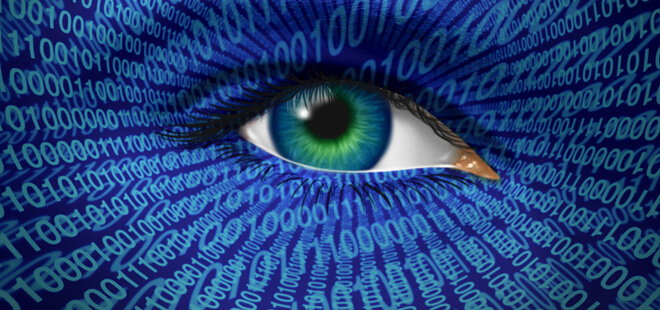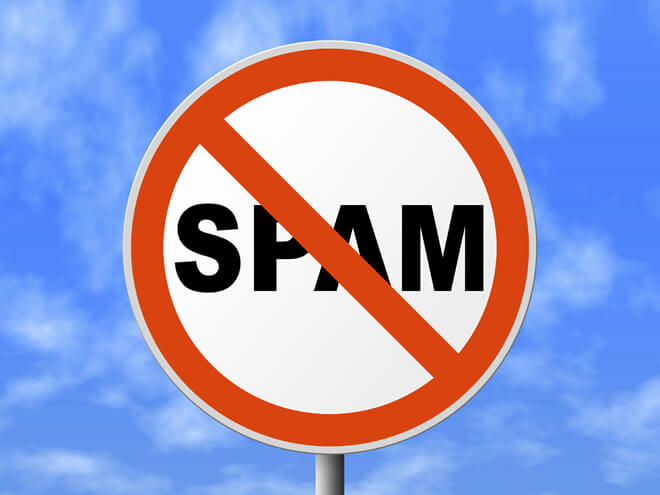QR Codes: Are You Using Them to Your Best Marketing Advantage?
Say what you will about QR (Quick Response) codes: they are just a fad, they will be forgotten once augmented reality takes hold or they’re just an extra step in inputting a URL but they are here and people are enjoying using them, so make the most of them!
QR codes, if you haven’t heard of them or clicked the link above to see the whole explanation, are scanned with your iPhone, Android or other camera-enabled Smartphone and link you to digital content on the web; activate a number of phone functions including email, IM and SMS; and connect the mobile device to a web browser.
They have been used in Japan for over a decade (invented by a Toyota subsidiary, Denso in 1994 to track vehicles during the manufacturing process, the QR code is one of the most popular types of two-dimensional barcodes. It was designed to allow its contents to be decoded at high speed. To its credit, Denso owns the patent rights on QR codes, but has chosen not to exercise them) and now the rest of the world is catching up with some amazing innovations on the technology.
One of the complaints detractors voice is why not just have the URL and let people hand key it in on their cell phones or computers? That’s easy enough but properly used, QR codes open a whole new way to market your business and products. You can’t fight technology so make the best of it.
Design Your QR Code to Fit Your Brand
Although a QR looks like a crossword puzzle, there are ways to manipulate the code. As with barcodes, that could be truncated and limited, colored and designed, the QR has properties that allow creativity.
QR codes designed by Jonathan D. Schmid (Schmidjd)
The twists and turns of the little black squares, as with a barcode, has a unique imprint, recognizable to scanners or readers but there is a 30% correction allowance, so a third of the code can be discarded and replaced with images, type or anything you can imagine. This article on Mashable outlines some ways to deal with the 30% error correction rate.
One of the most popular design practices with QR codes is to insert images within the code. Again, the 30% error correction will help but read this first!
Even small images, scattered throughout the code can cover or delete needed code blocks and/or be read as information by the scanner.
According to QRStuff.com, “Compromising the scanning safety margin of the QR code by adding an image to it can also be further complicated if the scanning software interprets any part of the embedded image as actual data, and then decodes the contents of the QR code incorrectly.”
Hints from that article are surely words to the wise:
- If you are going to tackle it yourself, here’s a few pointers on do’s and don’ts if you’re attempting to put an image into a standard QR code that hasn’t been specifically created to accommodate one:
- Keep the size of the embedded image well below 20% of the area of the QR code itself – 15% is probably the best compromise.
- Put the image in the middle of the QR code and definitely don’t obscure any of the 3 big squares in the corners (they have a special purpose and must be retained).
- Always leave a white border (1-2 times the width of a single data square in the QR code image) all the way around the edge of the embedded image so that the data areas of the QR code are separated from the image.
- Make sure that all the data squares left in the QR code are intact – remove any partially obscured squares completely.
- Check that the embedded image doesn’t coincidentally contain any small square (or squarish) elements that may be interpreted by the scanning device as part of the QR code’s data, rather than being ignored as part of the image.
- Most QR code scanning devices scan in grey-scale so using contrasting colors to differentiate the image from the QR code is not going to help you at all.
- It’s probably also a good idea to make the QR code image larger than you would have if it didn’t have an image in it.
RELATED: Web Site Or Facebook? Depends On Your Needs!
If your head is spinning, perhaps it’s better to seek out software that will do this for you. This article has a couple of different self-generating designed QR Code software sites. Check them out and play a bit!
Putting QR Codes to Work for You
So, do you put a QR Code on your business card and leave it at that? Maybe on the back of the card so people can use it to go to your web site, your about.me page, Visual CV page or just a web page thanking them for accepting your card and pointing them to your web site home page. People still like to read the information on standard business cards (even though for apps that list people, such as membership databases and networking apps, QR codes can transfer contact cards – vCards – into the phone’s address book and you can display phone numbers as QR codes for automatic scan-to-dial functionality. This could be useful in printouts of lists and directories), so keep QR use tempered with human marketing. The time will come when people catch up with the technology.
The big advantage of the QR is, as stated in the article in which the following appears…
The QR code has become a focus of advertising and marketing strategy, since it provides quick and effortless access to the brand’s website. Beyond mere convenience to the consumer, the importance of this capability is that it increases the conversion rate (that is, increase the chance that contact with the advertisement will convert to a sale), by coaxing qualified prospects further down the conversion funnel without any delay or effort, bringing the viewer to the advertiser’s site immediately, where a longer and more targeted sales pitch may continue.
It’s not only just bringing a prospective client or consumer into your web site. An example of smart QR usage was when a professional sports team used the codes on their stadium cups to replace the season schedule which freed up more advertising space and let fans find the schedule anywhere they were, once the QR on the cup was bookmarked.
RELATED: Why Office 365 Is a Better Choice for Your Business
How could a multinational supermarket giant increase its market share in South Korea without opening new stores? The solution was to plaster life-size posters of grocery store displays along the entire length of a subway walls and added QR codes. Tired workers could now do their grocery shopping while waiting for the train home. They simply scanned individual food items to a virtual shopping cart and their groceries were home- delivered shortly afterwards. 10,287 customers visited the virtual grocery store with their phones during the campaign and the supermarket’s online sales grew 130 percent.
Some other unique and innovative uses were Starbucks for QR codes that allow customers to see video interviews with coffee experts, JC Penney for a Christmas campaign in which shoppers buying a gift from the store could scan a QR code, record 60 seconds of a voice message and attach the QR code to the gift for a personalized greeting and Victoria’s Secret for a billboard campaign featuring nearly nude models where QR codes were strategically placed to cover select body parts.
There are companies popping up that specialize in painting QR codes on rooftops in the hope these would show up on screens of Google Maps users and could be scanned for more information. Unfortunately, Google maps are not updated enough due to privacy issues and remapping costs to legitimize the costs as of now. The code also has to be VERY big so it can be scanned, even in extreme zoom.
- A QR code on the packaging of your product can help sell it by linking to a video of the product advantages and can be scanned and viewed in the store aisle. Packaging especially in markets where three or more languages must be included on the package for multiple markets, can save room through QR codes as well as allow the aforementioned videos in different languages. The advantages are obvious; more markets covered with one printed package, greener packaging and significant savings on packaging costs.
- QR codes can be used to advertise new products or services or specials your store or company is holding. There is no more waiting for printing or web design to upload new pages with coding time. A simple jpeg image or just type can be ready for daily specials that can be posted via a QR code to your site, emailed, posted to Twitter or placed in the window of your shop with a standard inkjet printout.
- QR codes can invite people to a special coupon, scheduled sales or create entries on phone calendars so prospects and customers will have all your monthly information at their fingertips.
- Those vinyl signs you see on the back windows of SUVs, vans and trucks can now be replaced with QR codes so when someone is stopped behind you in traffic, all they need do is scan the code instead of searching for a pencil and paper.
- Real estate agents can include a QR code on a for sale sign that will take people to a video of a walkthrough of the property.
- Retail shops can post QR codes next to products for in-depth reviews that appear on their blog.
- Companies can place QR codes on employees’ business cards, making it easy for people to connect with them on multiple social networks.
- Merchandisers can include QR codes on product labels so consumers can scan the code and find other products and locations to purchase more.
- Service people, such as photographers, designers and artists can use codes to bring prospects to online portfolios with other examples of their work.
- Use the QR code to let customers send themselves a reminder via SMS.
RELATED: The Next Evolution in Social Media Marketing
(See ten more great ideas for QR code marketing from Mashable).
Some Important Rules
- Keep in mind that QR scanning is done on a phone, so you need to mobilize the landing page.
- Use a short URL (try bit.ly for a URL shortener) so the code will have a greater area of error correction. The smaller the code, the more difficult it is to scan.
- Keep the content fresh and valuable! A large number of people are reported to have used the scanner to check prices and product information in the store when they find a product. The more you offer them that is only available via the QR scan, the more consumers will gain trust in your codes. Here’s a great example of how McDonald’s used QR codes for product information. Fresh produce in Japan also makes great use of QR codes and the mobile web for product information.
A friend of mine recently posted a picture of a QR code his eight year-old son made out of LEGOs. With no surprise, it WORKED! I’ve seen hand-drawn QR codes that work and these photo QR codes are a huge and impressive undertaking. Still, if all the bottle caps, M&Ms, beans, ink spots, etc. work, why not get creative? There’s even someone who grew crops in Farmville to create a QR Code.
Designed by QRArts
So, are you ready to make the jump into the next wave of integrated digital marketing? Are you ready to design the codes needed by a multitude of businesses? To help catch up on the technology, here’s a site you need to visit often. For free QR code generators, start here.
Top image ©GL Stock Images




